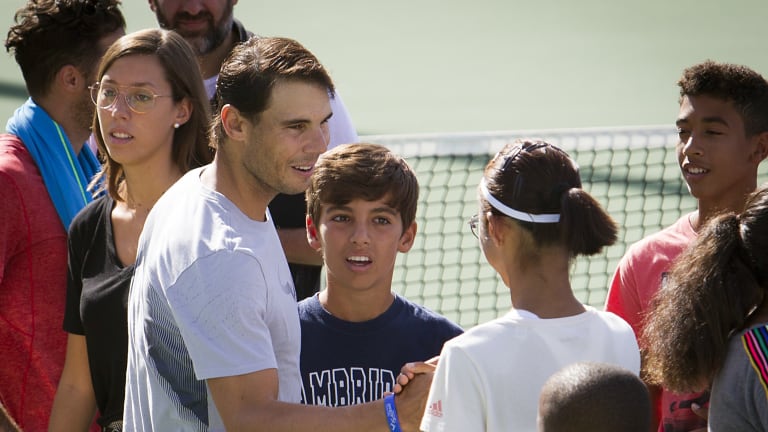For our sixth annual Heroes Issue, we’ve selected passages from the last 50 years of Tennis Magazine and TENNIS.com—starting in 1969 and ending in 2018—to highlight 50 worthy heroes. Each passage acknowledges the person as they were then; each subsequent story catches up with the person, or highlights their impact, as they are now. It is best summed up with a quote from the great Arthur Ashe, that was featured on the cover of the November/December issue of this magazine in 2015: “True heroism is remarkably sober, very undramatic. It is not the urge to surpass all others at whatever cost, but the urge to serve others at whatever cost.”
He single-handedly made the event, a top-tier tournament that was missing Roger Federer, Andre Agassi, Lleyton Hewitt, and defending champion Marat Safin, a rousing success. There was a soccer-match atmosphere whenever he played, and a woman who I believe was the Queen of Spain showed up for the final (whoever she was, she was nearly in tears by the finish). –Stephen Tignor / October 2005
When Rafael Nadal was learning tennis on red clay in Mallorca, he dreamed of winning Wimbledon, the grass-court tournament that had befuddled Spaniards for generations. Three years before doing just that, Nadal won ATP Masters titles on an outdoor hard court in Montreal and an indoor hard court in Madrid—the “top-tier tournament” in the above quote.
Nadal will always be known as the King of Clay, but he’s proven to be much more than a single-surface specialist. He’s also proven to be much more than a historically great tennis player. First and foremost, there’s his eponymous foundation, which has helped disadvantaged children since its formation in 2008. Then there’s the Rafa Nadal Academy. Opened two summers ago in Mallorca, it will ensure that tennis remains part of the island’s identity for generations to come.
Like Nadal himself, there is much more than meets the eye at the 78,000-square foot campus located just outside Manacor’s city centre.
“Not all the kids that come here have the same goal in life,” says Nadal. “We want to help kids to try to become professional tennis players, of course. But it’s so important that the kids that come here, when they leave, to become good people—to prepare them the right way, with the right education, the right values.”
